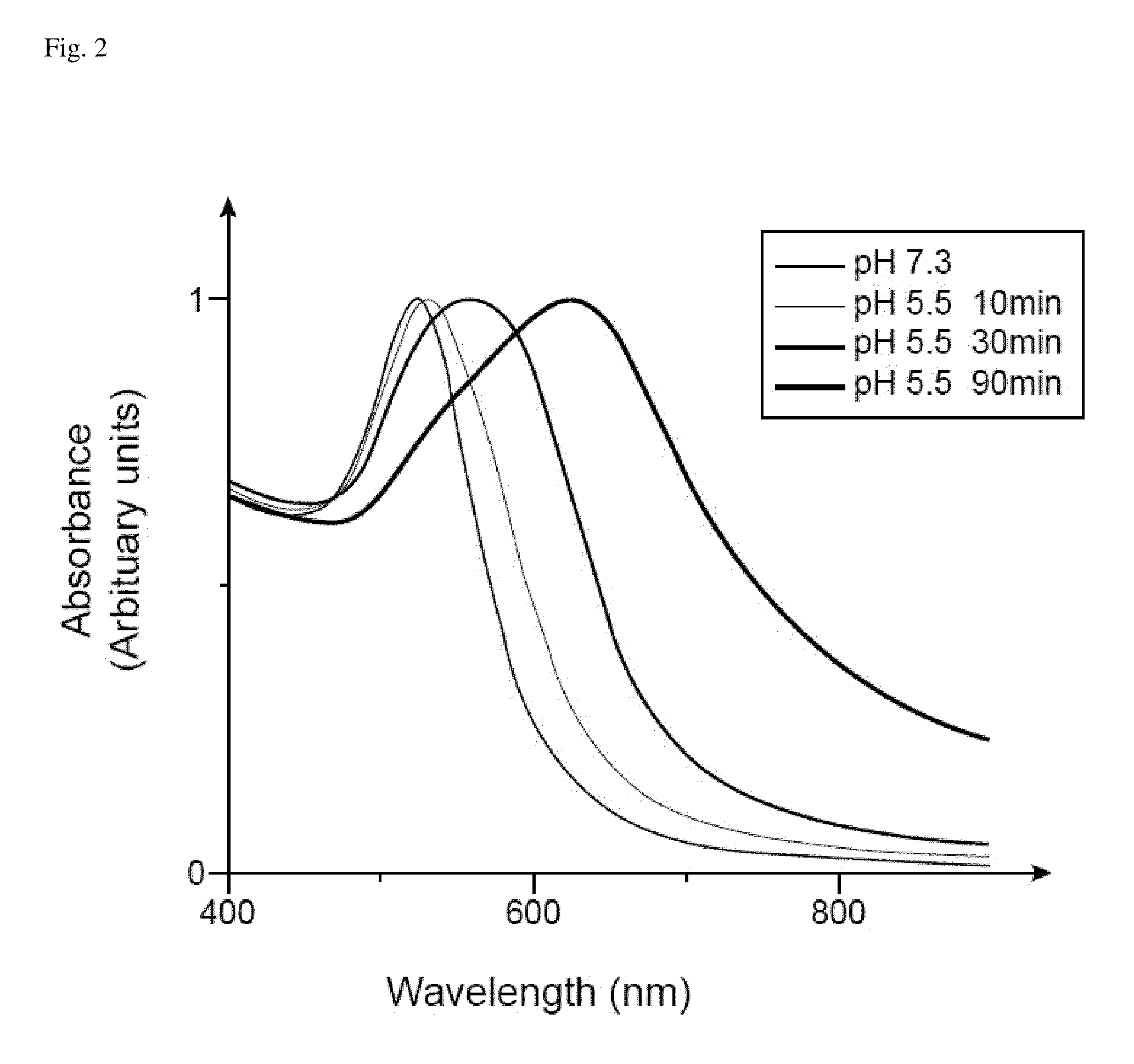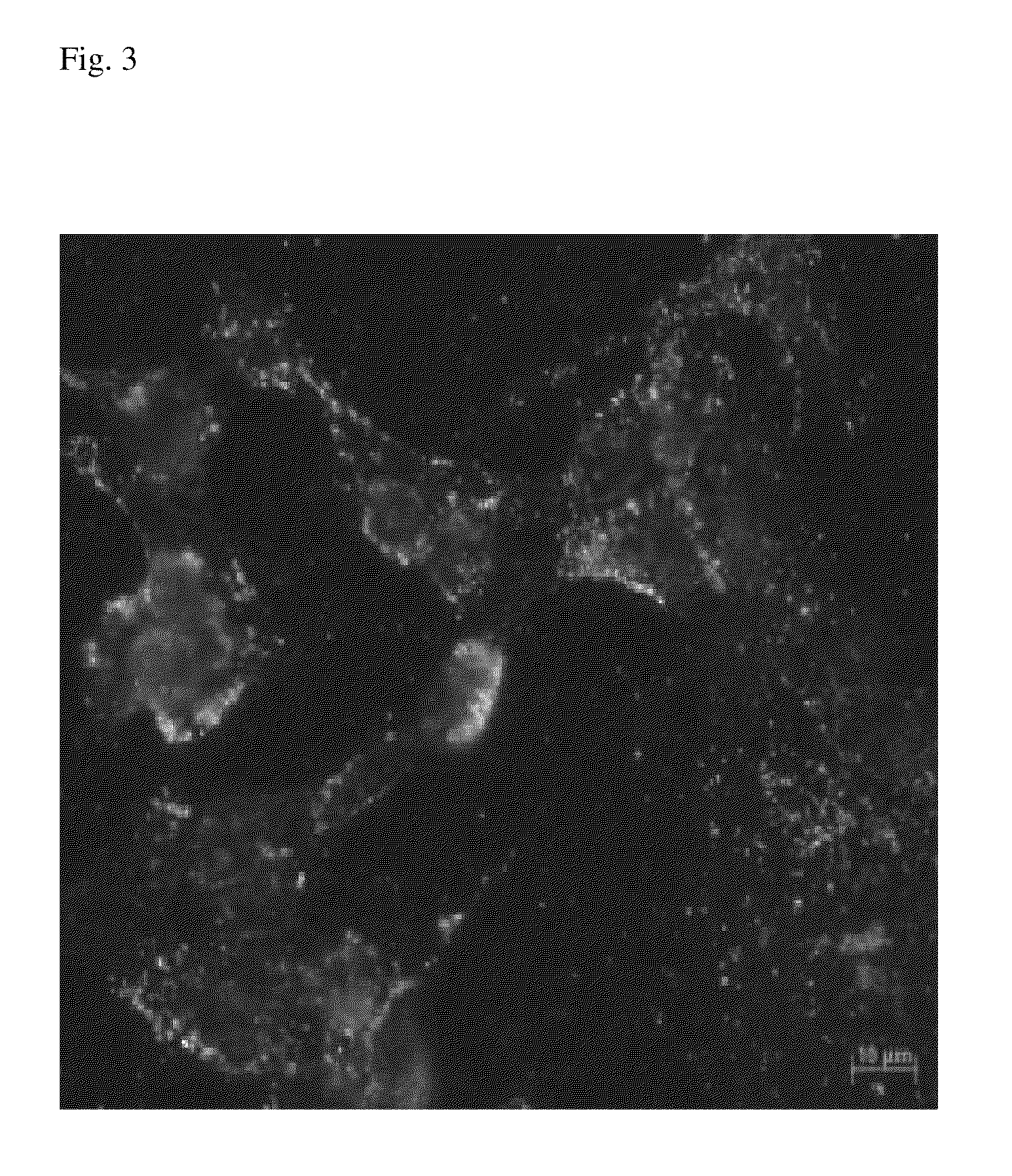pH Sensitive Metal Nanoparticle and Preparation Method
- Summary
- Abstract
- Description
- Claims
- Application Information
AI Technical Summary
Benefits of technology
Problems solved by technology
Method used
Image
Examples
Embodiment Construction
[0051]Synthesis of pH-Sensitive Ligand
[0052]A solution of lipoic acid (1) in anhydrous chloroform, as illustrated in the following reaction scheme, were first mixed at room temperature for 5 min with 1.3 equivalents of carbonyldiimidazole under a vacuum condition with stirring, followed by separating the reaction solution layer from the remaining carbonyldiimidazole. Ethylenediamine was dissolved in an amount corresponding to 5 equivalents of the lipoic acid in anhydrous chloroform under a nitrogen atmosphere, cooled in an ice bath, and mixed for 1 hr with the separated reaction solution by stirring. The resulting reaction solution containing the product (2) was extracted three times with 10% NaCl and once with deionized water and mixed at room temperature for 24 hrs with citraconic anhydride to form a solid substance (3). After filtration, the solid substance was dissolved in an aqueous solution which was adjusted to a pH of 9 with NaOH. The resulting solution was stirred at room t...
PUM
| Property | Measurement | Unit |
|---|---|---|
| diameter | aaaaa | aaaaa |
| diameter | aaaaa | aaaaa |
| diameter | aaaaa | aaaaa |
Abstract
Description
Claims
Application Information
 Login to View More
Login to View More - R&D
- Intellectual Property
- Life Sciences
- Materials
- Tech Scout
- Unparalleled Data Quality
- Higher Quality Content
- 60% Fewer Hallucinations
Browse by: Latest US Patents, China's latest patents, Technical Efficacy Thesaurus, Application Domain, Technology Topic, Popular Technical Reports.
© 2025 PatSnap. All rights reserved.Legal|Privacy policy|Modern Slavery Act Transparency Statement|Sitemap|About US| Contact US: help@patsnap.com



